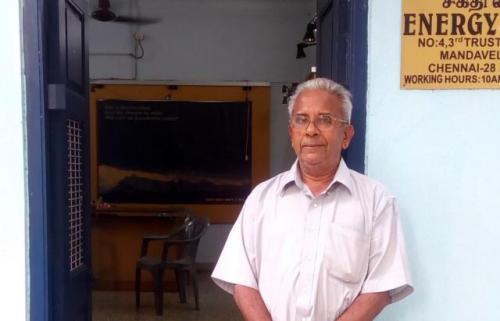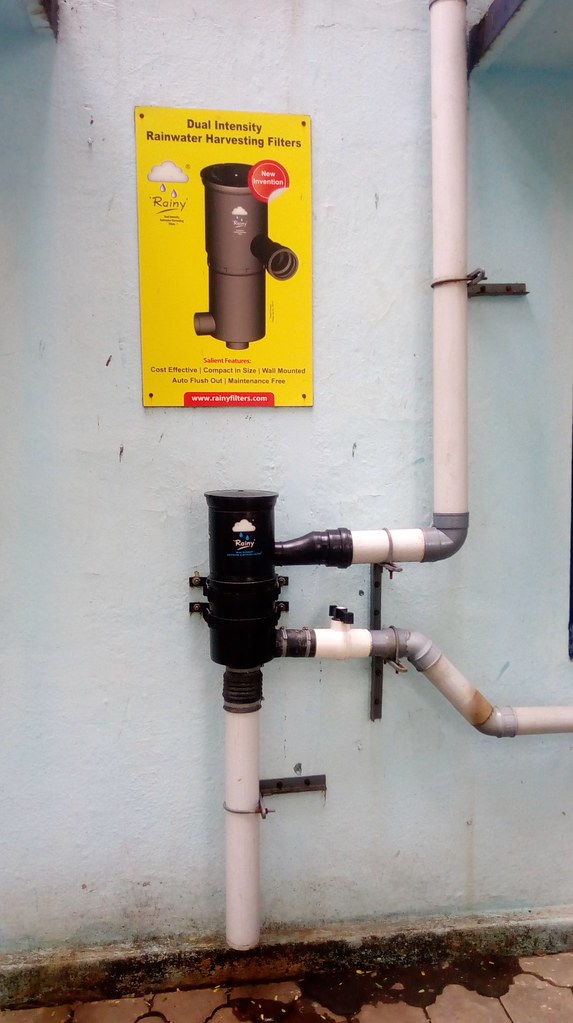
Dr Sekhar Raghavan, the water warrior of Cheenai, talks about hows and whys of rainwater harvesting
IT'S NOT without reason that the Third World War is predicted to be triggered by water scarcity. The numbers themselves give us enough reason to be worried- by 2025, 60 per cent of India is expected to be living in towns and cities. Bore wells are getting deeper, urban areas brimming with population, and some already suffer from water shortage.
However, success stories of humble organisations like the Rain Centre in Chennai let the results speak for themselves, and keep hope alive. The Rain Center was set up by Dr. Sekhar Raghavan in Chennai in 2002 through the Akash Ganga Trust. Chennai owes the success of its rainwater harvesting to Dr. Raghavan, and the work done through his Rain Center.
The Rain Centre is a charming little place located in Chennai’s Mandavelipakkam. On display in the center are models for rainwater harvesting in buildings, as well as educative pieces about the importance of Rainwater Harvesting. The Center is a one stop shop for all information about rainwater harvesting. The quote that one sees on the poster as soon as they step into the Rain Centre succinctly summarizes its mission- “Rain is decentralized. So is the demand for water. Why can’t we decentralize supply?”
How did the work on rainwater harvesting begin?
In 1995, I used to pay door to door visits to households to spread awareness. Ironically, it was hard to talk about the importance of rainwater harvesting to the educated people, who have an omniscient attitude towards everything. The urban mentality was such that water was being viewed as a commodity, which people thought could be purchased as and when the need arises. This is in contrast to the attitude of people residing in rural areas, who, without formal education, recognise the importance of water and its conservation.
With the help of the media, as well as a government ordinance that gave equal importance to rainwater harvesting, the work received the much needed backing.
What were the turning points?
Chief Minister J Jayalalithaa included rainwater harvesting as a promise in her 2001 election manifesto. An ordinance was issued in October 2002 by the Jayalalitha government asking all houses to get rainwater harvesting mechanisms within one year. The date was later advanced to August 2003. The government report showed 90 per cent compliance, but the Rain Center found that only 50 per cent houses had implemented it.
In her budget speech in 2011 too, Chief Minister Jayalalithaa asked for review and audit of rainwater harvesting at the grassroots. We did the audit and our recommendations were recorded in the development regulations given to builders. These have been implemented in a wide variety of building structures.
An ordinance was issued in October 2002 by Jayalalitha government asking all houses to get rainwater harvesting mechanisms within one year
How has rainwater harvesting helped Chennai?
After the monsoons of 2005, Chennai was not water starved anymore. In f act, the groundwater level was found to have increased by 6 meters in January 2006. It has only improved since then. Now Delhi Chief Minister Arvind Kejriwal is also keen on replicating Chennai’s rainwater harvesting success story in the national capital.
act, the groundwater level was found to have increased by 6 meters in January 2006. It has only improved since then. Now Delhi Chief Minister Arvind Kejriwal is also keen on replicating Chennai’s rainwater harvesting success story in the national capital.
Everybody has to turn to this because rainwater harvesting is no more an alternative. It is something that has to be done because rain is the only predominant source of water. It rains for 60 days a year, and our demand for water is for 365 days. Groundwater is like a bank, and harvesting rainwater is like depositing money into it. The more we deposit, the better our returns. Water management is simple:
a) Harvest Rainwater
b) Reuse Greywater (bath water which has been mixed with soaps). This can be naturally filtered by water loving plants such as Canna, which can then be used to flush toilets
c) Learn to live with less water
But rainwater harvesting is an old concept
Of course, India was a country with numerous methods of conserving and harvesting water such as “Eri”s (in Tamil Nadu), and “Cheruvu” system (in Andhra Pradesh), which were surface sources for storage and usage of water. The village elders formed “Eri Committees”, and ensured that the Eris were managed by the village community, including Dalits, who held the most important task of opening the Eri gates, and held autonomy in matters concerning how much water to allocate to each field.
Village water management was a socially harmonious and empowering way of conserving water. It was the British government, in its bid to centralize power that altered the course of water management in India. The subsequent governments blindly followed the same model. Thus, rainwater harvesting becomes all the more important in today’s rapidly urbanising world, where traditional intelligence is diminishing, and the pressure of population is creating skyrocketing demands for water.
Village water management was a socially harmonious and empowering way of conserving water. British government altered the course of water management in India.
How do you rate awareness level about rainwater harvesting in Chennai?
Not very happy. I feel more NGOs must take up the cause. People need to be sensitised, especially the media, builders, architects, and civil engineers. Despite our numerous offers to train people in the nitty- gritties of rainwater harvesting for free, not many are talking about rainwater harvesting.
Rainwater harvesting should be included in the education curriculum but only where it is required or relevant. For instance, architecture and civil engineering students need to be familiarised with the concept. Many a times, Chennai Metropolitan Development Authority (CMDA) issues a 100 per cent compliance certificate even though a building has only 30 per cent compliance, Rainwater harvesting also faces other problems like poor monitoring and maintenance. At the end of the day, it all boils down to people having the will to do it.
Rainwater harvesting should be included in the education curriculum but only where it is required or relevant
Was there a link between rainwater harvesting and last year’s floods in Chennai?
Rainwater harvesting is a method of flood mitigation because it injects water into the soil. The city had already received a good amount of rain for about a month before the catastrophe happened. The water bodies in the peri- urban areas have been abused or are poorly managed thanks to dumping of solid waste. The intensity of floods could have been reduced by at least catching water in these peri- urban bodies. Rain's right of way has been blocked, which has been exacerbated by construction issues, poor city drainage, and mismanagement of garbage.
Liked this story? GoI Monitor is a non-profit, and we depend on readers like you to Support Our Efforts
